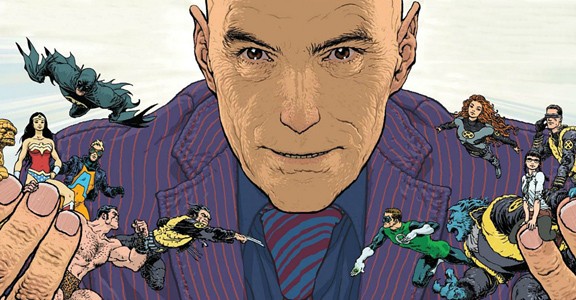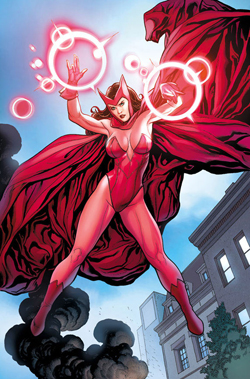What is “Happy!”, well take the Jimmy Stewart classic Harvey, How the Grinch Stole Christmas, any Quentin Tarrantino movie and a heap of commentary on the state of Superhero comics, filter it though the views and philosophies of Grant Morrison and thats “Happy!”.
So brief synopsis of the book and the Syfy (or in the UK Netflix) series. Happy! is the story of Nick Sax (whose name should really be spelt Sacks to keep with the Christmas theme of the story), a disgraced cop turned mercenary and high functioning alcoholic and drug addicts reconnecting with his estranged daughter (Hailey) by rescuing her from being molested by “Very Bad Santa” whose been hired to do such things by the mob as revenge for Sax killing an extra family member (he was hired to kill 3 and killed 4). The bonus one having made a deal with Mr Blue (the main gangster) to split the money they where hiding between them, but with him dead, Blue has no access to his ill-gotten gains. Sax’s only ally in rescuing his daughter from not so jolly Saint Nick is Happy a blue horse and Hailey’s imaginary friend. Happy is 1-2-3-4-5 grades higher than a hallucination but only Sax can see him, Happy is also in stark contrast to Sax. Happy is everything you’d expect a child’s imaginary friend to be, loving, caring and very excitable. Now as Happy was originally published as a 4 Issue mini-series by image comics for a full length TV series things had to be added, unlike many other adaptations Grant Morrison did write the pilot episode and the finale of Season 1 and only the opener to Season 2. Additions to the book include Sunny Shine a prima-donna children’s TV presenter who owes his success to aiding in organised crime and a pact with the “Wishees” (another addition from the book) parodies of the Teletubbies that are secretly Lovecraftian elder gods that feed off of misery.
Now nothing by Grant Morrison is just a story, Morrison writes about his own life in a distorted way. He uses a method that he calls a “Fiction suit” to incorporate himself into the story; in Animal Man he became the character the writer, in the Invisibles he was King Mob, in All Star Superman he was Lex Luthor, during his run of X-men he was Professor X and in Happy he is Sax. Other people also get fiction-suited into his stories, Mark Millar was Kid Omega in his run on X-men and Morrison’s father was Flex Mentallo (in his eponymous series) and Superman in All Star Superman. In Happy! very bad Santa is Frank Miller and Alan Moore. Very Bad Santa only exists to pervert and distort something innocent and harm children, much like how these two started the Dark age of comics which lead Superhero comics to become more dour and depressing and Hailey is the innocent children who won’t look up to Superman or the Flash because they read Watchmen or any piece of crap written by Frank Miller. Even though Miller and Moore have drastically different political views (Moore being an Anarchist and Miller being an Anti-Feminist and self proclaimed Fascist) they both created comics intended to be deconstructions of Superheroes but are really just Adolescent trash that think they’re deep. Now Sax is no saint and Morrison in his post-Marvel work is more reflective and realising that he is also guilty of this but Sax like Morrison changes his way in the story and does what he can to protect his daughter even if Sax had abandoned her before she was born. Mr Blue is of course the editorial staff of DC (in the series he’s played by an actor who looks a lot like Brian Azzarello a contemporary comic book writer who worships and tries to emulate both Moore and Miller whenever he can), and DC seem to have sold their core audience of wide-eyed innocent children who aspire to be Superheroes for Miller and Moore fanboys. DC’s practice can also be described as predatory, a very good example of this is Harley Quinn, Harley was an innocent character with the mind of a child and the victim of the Joker but now she’s a fetish, licking phallic objects like baseball bats and sleeping with all the male heroes when they guest star in her comic.
What about Happy the eponymous character, how does he fit into all this criticism of DC comics. Well he doesn’t, Grant Morrison has certain theories about how the universe works. Happy is 5 grades above a Hallucination because he’s from the Fifth Dimension. Now stay with me on this, humans are fourth dimensional beings, we can fully perceive four dimensions (height, width, breadth and time), Comic book characters are one dimension below us, which puts them at the mercy of Four Dimensional beings, writers and artists craft their whole world, we change how they act on a whim, this is how Batman can be both Adam West and the version from Dark Knight Returns. His whole personality is defined by his creative team, he can be an angry loner or be part of a team of super pals. Now beings from the Fifth Dimension can affect us, but we can’t perceive them just like how Spider-man has no idea that Stan Lee is making him fight Doctor Octopus again. When we come across beings from the fifth dimension we can only imagine what they are and handily the fifth Dimension is to us Imagination. With Imagination we can create new worlds but we can’t exist in them we’re stuck with the four we have, to master imagination is to become akin to godhood. Happy as an imaginary friend is created by Hailey through the Fifth Dimension (which is imagination) and has become a native to that world, and with this he is all powerful but due to him being made by a child has no grasp of his powers (these ideas where alluded to in the second season of the TV series) and while Happy is a benevolent Fifth Dimension inhabitant others like the Wishees are not so nice and only wish to mock and toy with lesser beings on our plane of existence.
And if you can wrap your head around all that well done you now understand most of Grant Morrison’s back catalogue.




_from_Black_Panther_and_the_Agents_of_Wakanda_Vol_1_1.jpg/revision/latest?cb=20190919215904)

